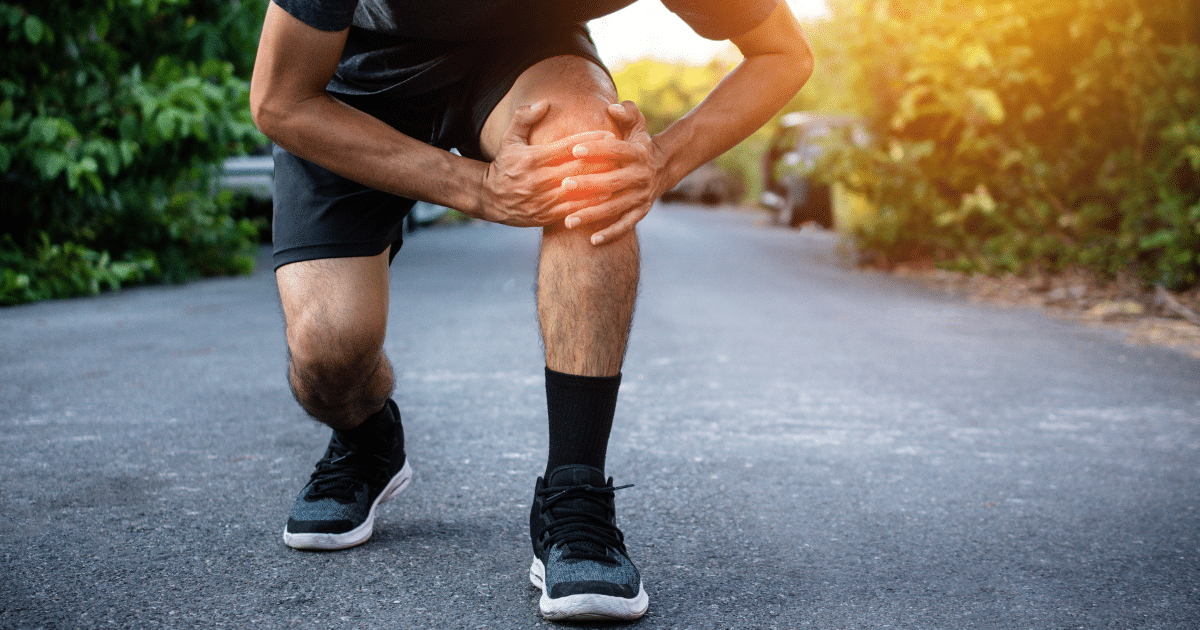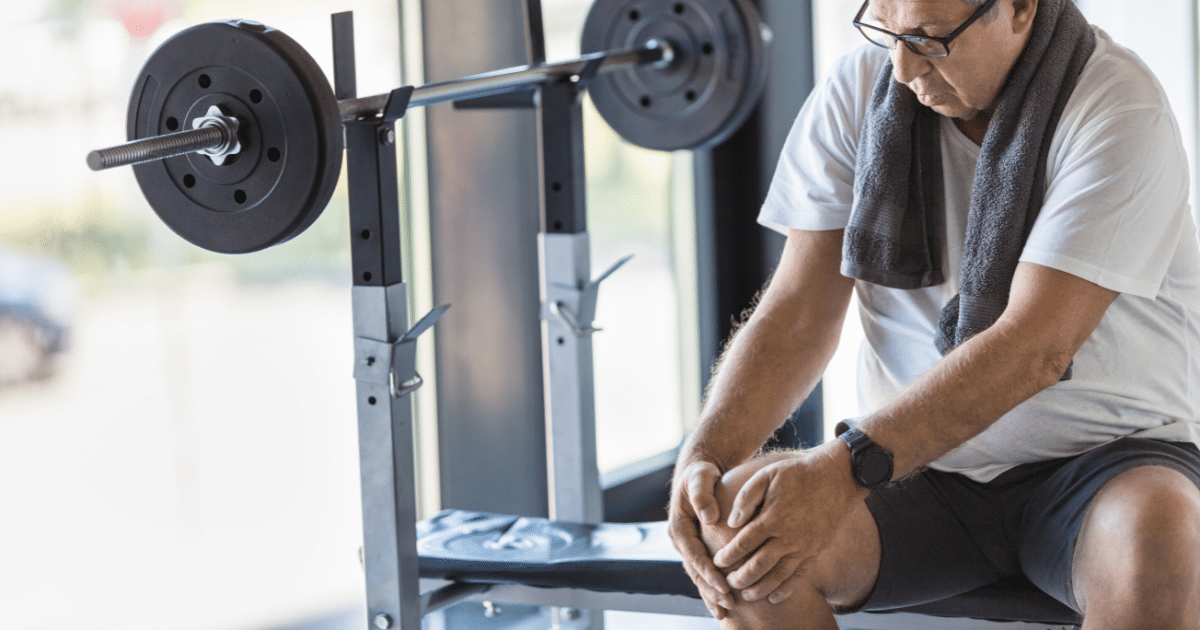The Worst Fitness Injuries, And What To Do About Them
Most fitness injuries, like muscle pulls and inflamed tendons, are easy to handle with things like rest and ice. But there are a few fitness injuries that are quite serious. If you sustain one, always remember that the injury is only temporary. And, if you can make it past a broken foot or other serious injuries, you can make it past almost any other physical obstacle that comes your way.
Table of contents
Disclaimer: This article is for informational purposes only and is not meant to treat or diagnose any condition. It is recommended that you speak with your doctor before starting any exercise program, changing your daily nutrition, or adding any supplements to your regimen.
How Common Are Fitness Injuries?

Fitness injuries are relatively common, as engaging in physical activity, especially at high intensity, always carries some level of risk. The prevalence of fitness injuries can vary based on several factors, including the type of activity, individual fitness levels, proper form and technique, and overall health.
Here are some general observations:
- Type of Activity: High-impact and high-intensity activities, such as running, weightlifting, and contact sports, tend to have a higher risk of injuries compared to low-impact exercises like swimming or walking.
- Individual Fitness Levels: Beginners or those returning to exercise after a long hiatus may be more susceptible to injuries due to the body not being accustomed to the stress placed on it.
- Form and Technique: Poor form and improper technique significantly increase the risk of injuries. It is crucial to learn and practice proper form to minimize the chances of getting hurt.
- Age and Health Status: Older individuals and those with pre-existing health conditions may be more prone to injuries. It’s important to consider individual health and fitness levels when engaging in physical activity.
- Overtraining: Pushing the body too hard without adequate rest and recovery can lead to overuse injuries and burnout.
- Environmental Factors: The type of environment in which the activity takes place can also impact injury rates. Uneven surfaces, improper equipment, or inadequate warm-up can contribute to accidents.
While fitness injuries are common, many can be prevented with proper precautions. This includes appropriate warm-up routines, gradual progression in intensity, proper equipment use, and listening to your body.
How to Avoid Fitness Injuries

Preventing fitness injuries involves a combination of proper preparation, technique, and recovery. Here are some tips to help you avoid fitness injuries:
- Warm-Up Adequately:
- Always start with a proper warm-up before engaging in intense physical activity. This can include light cardiovascular exercise, dynamic stretching, and mobility exercises.
- Gradually increase the intensity of your warm-up to prepare your muscles and joints for the upcoming workout.
- Learn and Use Proper Technique:
- Ensure you understand and use correct form and technique for each exercise. If you’re unsure, seek guidance from a qualified fitness professional.
- Focus on controlled movements and avoid using momentum to lift weights. This reduces the risk of strains and overuse injuries.
- Progress Gradually:
- Avoid pushing yourself too hard, too quickly. Gradually increase the intensity, duration, and frequency of your workouts to allow your body to adapt.
- Listen to your body and pay attention to any signs of fatigue or discomfort.
- Include Variety in Your Workout:
- Incorporate a variety of exercises into your routine to prevent overuse injuries. Cross-training helps balance muscle development and reduces strain on specific joints or muscle groups.
- Use Proper Equipment:
- Ensure that your workout gear and equipment are in good condition. This includes appropriate footwear, clothing, and any tools or machines you may use.
- Replace worn-out shoes, and make sure equipment is adjusted to your body size and properly maintained.
- Stay Hydrated and Nourished:
- Proper hydration and nutrition are crucial for supporting your body during exercise and promoting recovery. Dehydration can increase the risk of cramps and fatigue.
- Include Rest and Recovery:
- Allow your body sufficient time to recover between intense workouts. Rest days are essential for preventing overtraining and reducing the risk of injuries.
- Get adequate sleep, as it plays a crucial role in the body’s recovery and repair processes.
- Listen to Your Body:
- Pay attention to any pain, discomfort, or signs of overtraining. If something doesn’t feel right, modify your workout or consult with a healthcare professional.
- Don’t ignore persistent pain, and avoid pushing through injuries. Rest and seek medical advice if needed.
- Get Professional Guidance:
- Consider working with a fitness trainer or physical therapist, especially if you’re new to exercise or have specific health concerns. They can provide personalized guidance and correct your form.
Remember that everyone’s body is different, so it’s essential to find an exercise routine that suits your individual needs and capabilities.
What Are Some of the Worst Fitness Injuries?

Below are some of the worst fitness injuries many people experience along with what you can do about them if they happen.
1. Broken Foot
Hairline stress fractures are rather common among runners. Typically, a combination of overuse and improper mechanics causes stress fractures, so they usually heal on their own after some rest and some minor adjustments to your gait. Most other foot injuries, although they can be just as painful as broken bones, are really just muscle injuries.
But bone fractures are another matter. Trauma usually causes these fitness injuries, so they are rather rare among young, healthy people who do not participate in contact sports or high-speed cycling. However, if you already have weak bones, perhaps due to genetics or osteoporosis, one bad step off a curb might be enough to fracture a foot bone. Even though it feels solid, there are twenty-six different bones in the foot, and most of them are small and narrow.
Once the doctor surgically corrects the fitness injuries, she/he will tell you how long to stay off your feet. There is a wide range of footwear for broken foot needs available. During early recovery, it’s usually best to completely immobilize the foot, so a large, heavy boot is best. Later one, switch to a smaller boot that supports and partially immobilizes the area but allows some limited mobility.
2. ACL Tear
Much like broken feet, anterior cruciate ligament tears are not normally fitness injuries. Instead, ACL tears are most commonly associated with basketball, football, soccer, and other sports that require sudden drastic movements. But if the knee ligaments are already weak, perhaps due to a muscle issue that has not fully healed, ACL injuries are possible in a fitness context. These wounds are also much more common among women than men.

If this key knee ligament tears, you will know it. In addition to the trademark popping sound, most people cannot put any weight on the knee because of the intense pain.
ACL tears do not always require surgery. If the injury is mild enough, physical rehabilitation alone may allow the ligament to heal. But that’s not true in most cases, and indeed, ACL surgery can be rather complex and is sometimes associated with very long recovery periods. However, this too shall pass.
3. Back Injury
For the most part, running is great for people with back issues. The combination of endorphin release and movement in the spine often significantly decreases the dependence on pain pills and may even obviate the need for the most aggressive kinds of surgeries, such as spinal fusion. However, as with bone fractures and ACL tears, this condition increases the potential for back injury.
Running is hard on your joints, especially if they are already weak. Consider wearing a lightweight back brace while running to reduce the repetitive jarring motions. There are also a number of exercises that help prevent running-related back problems and fitness injuries.
Disc problems, whether herniation or degenerative disc disease, is usually the worst case scenario. Discs are the spine’s shock absorbers, and if they are compromised, very serious fitness injuries could result. If the pain radiates from your back to your legs, see a doctor straightaway before the disc issues become even worse.
To keep the benefits of running in your life, it’s important to be aware of the potential for serious injury, and it’s also important not to let the fear of these fitness injuries prevent you from meeting your fitness goals.


*Disclosure: This article may contain affiliate links or ads, which means we earn a small commission at no extra cost to you if you make a purchase through these links. These commissions help support the operation and maintenance of our website, allowing us to continue producing free valuable content. Your support is genuinely appreciated, whether you choose to use our links or not. Thank you for being a part of our community and enjoying our content.
PLEASE CONSIDER SHARING THIS ON YOUR SOCIAL MEDIA TO HELP OTHERS LEARN MORE ABOUT THIS TOPIC. SIMPLY CLICK BELOW!

